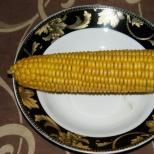How to determine masculine or feminine rhyme. Feminine rhyme. II. Language warm-up: let's stretch our tongue
It is necessary to differentiate the concepts of rhyme and rhyme. If the first is the consonance of the endings of two words, then the second represents the order of alternation of rhymes in the verse. Accordingly, rhyme is a broader concept than rhyme.
Types of rhymes
In versification they rely on several types of rhymes. Thus, according to the quality and quantity of matches of syllables, rhymes are usually divided into accurate and inaccurate. According to the specificity of the stress - masculine (stress on the last feminine sound (stress on the penultimate vowel sound), dactylic and hyperdactylic (stress on the 3rd and 4th vowel sound from the end). If the lines, in addition to the vowel, coincide in the pre-stress (support) then such a rhyme is defined as rich. If this is not the case, the rhyme is called poor.
Types of rhyme
There are three main types of rhyming in versification:
- adjacent (pair room),
- cross (alternating),
- ring (encircling, enveloping).
Also separate species represents free rhyme.
The adjacent (paired) type implies alternate consonance of adjacent lines - the first line rhymes with the second, the third, respectively, with the fourth, the fifth with the sixth, etc. All types of rhyme in a poem can be conventionally designated in the form of a diagram. Thus, an adjacent species is designated as “aabb”. Example:
“Only there is no rubbish these days (a) -
The light(s) are made differently.
And the harmonica sings (b),
That the freemen disappeared (b).”
(S. A. Yesenin).
A special case of adjacent rhyme is the alternation of rhymes according to the “aaaa” pattern.
Cross (alternating) rhyme is formed by alternating rhyming lines - the first rhymes with the third, the second with the fourth, the fifth with the seventh, etc. rhyming "abab":
“I remember a wonderful moment:
You appeared before me (b),
Like a fleeting vision(s),
Like a genius of pure beauty (b)"
(A.S. Pushkin).
The ring (encircling, enveloping) type of rhyme is built according to the “abba” scheme. Accordingly, the first and fourth lines, as well as the second and third, rhyme. This type of versification is less common than the previous two:
“We are not drunk, we seem to be sober (eh)
And, probably, we really are poets (b).
When, sprinkling strange sonnets (b),
We speak with time using “you” (a).
(I. A. Brodsky).

Free types of rhyme occur when there is no pattern in the alternation of rhymes:
“A horse thief was sneaking through the fence,
The grapes were covered in tan,
Sparrows pecked at the brushes (b),
They nodded the sleeveless stuffed animals (in),
But, interrupting the rustle of the grapes (b),
Some kind of rumble was tormenting” (c).
(B. L. Pasternak).

Accordingly, in this example, the types of rhyme are combined: the first and second lines are adjacent, and the third to sixth lines are cross.
Rhyme and whole stanza
A complete stanza implies the presence of at least one pair for each rhyme. This ensures the indivisibility of the overall body of a given stanza - it cannot be divided into smaller integral stanzas that have their own completed rhyme.
Depending on the number of rhymes forming a verse, the forms of monostich, distich, terzetto, quatrain, pentet, etc. are distinguished. A monostich cannot be a whole stanza, since one line does not rhyme with anything (even if it contains an internal rhyme). The distich is built according to the “aa” pattern, having, accordingly, one rhyme for the whole stanza. Also, the terzetto has one rhyme scheme - the “aaa” scheme. In this case, the terzetto cannot be divided, since with any division we get at least one monostych, which is not a whole stanza.
The quatrain includes such types of rhyme as ring rhyme ("abba") and cross rhyme ("abab"). In the case of adjacent rhyme (“aabb”), the verse is divided into two independent distichs, each of which will be an entire stanza. The pentet, in turn, combines six rhymes of an entire stanza.
Free and free verse
It is necessary to distinguish between the free form of rhyme and the free form of verse, since they are not the same thing. Free types of rhyme in a poem are formed by the so-called. free verse is a form of versification with changing types of rhyme. That is, the lines rhyme in different orders. Free verse (aka white), in principle, does not use rhyme:
“Listen!
After all, if the stars light up (b) -
So does anyone need this?
So someone wants them to be (d)?”
(V.V. Mayakovsky).

At the same time, free verse cannot be equated to prose according to the principle: since there is no rhyme, then how does it differ from, for example, an ordinary newspaper advertisement? One of the differences from prose is the tendency towards recitation, which distinguishes a poetic text from a prose text. This tendency is created due to the specific emotionality, the special mood of the poetic text, which does not accept monotonous reading. The second significant difference between free verse is its rhythm, which is formed due to a certain alignment of the number of syllables and stresses.
Poetic lines can be either rhymed or unrhymed. Unrhymed poetry that follows the rules of a particular meter is called in blank verse .
There was tram number ten
Along the boulevard ring.
It sat and stood
One hundred and fifteen people.
(S.V. Mikhalkov)
Blank verse should be distinguished from free verse (free verse) , which has neither rhyme nor meter and differs from prose only by the presence of division into verse segments. A striking example of free verse in Russian poetry is the poem by A.A. Blok “She came from the cold...”.
Rhyme(from the Greek “proportionality”) is a sound repetition in the final syllables of a line. When talking about rhymes, you should keep in mind their sound, pronunciation, and not spelling. Depending on how similar the sounds in rhyming words are, rhymes are divided into accurate and inaccurate.
Exact rhyme
- a rhyme in which all sounds (vowels and consonants) coincide (the bush is empty, the waves are full).
And chained by a strange intimacy,
I look behind the dark veil
And I see the enchanted shore
And the enchanted distance
(A. Blok)
Inaccurate - a rhyme in which not all sounds match.
My trusty desk!
Thanks for coming
With me on all paths.
He protected me - like a scar
(M. Tsvetaeva)
Based on the location of stress in rhyming words or combinations of words, rhymes are masculine, feminine and dactylic. IN male rhyme the emphasis falls on last syllable lines.
Wait for me and I will come back.
Just wait a lot.
Wait when they make you sad
Yellow rains...
(K. Simonov)
IN feminine rhyme the emphasis falls on second syllable from end of line.
Their words are stingy and random,
But the eyes are clear and stubborn,
The ancient secrets are revealed to them,
How to build stone temples.
(N. Gumilev)
However, most often in Russian poetry it occurs alternation of female and male rhymes.
Night, street, lantern, pharmacy,
Pointless and dim light.
Live for at least another quarter of a century -
Everything will be like this. There is no outcome.
(A. Blok)
Much less common dactylic rhyme (with emphasis on third syllable from the end of the line).
Crazy nights, sleepless nights,
Speeches are incoherent, eyes are tired...
Nights illuminated by the last fire,
Autumn's dead flowers are belated!
(A. Apukhtin)
If a rhyme ends in a vowel sound, it is called open , and if it’s a consonant – closed .
According to the arrangement of rhymes in the lines of a poem, several types are distinguished rhymes:
1. adjacent
, or steam room
– adjacent lines rhyme (aabb),
Apparently I can’t wait for freedom,
And prison days are like years;
And the window is high above the ground,
And there is a sentry at the door!
(M. Lermontov)
2. cross – the first and third, second and fourth lines rhyme (abab),
I don't like myself when I'm afraid
It annoys me when innocent people are beaten.
I don't like it when they get into my soul,
Especially when they spit on her
(V. Vysotsky)
3. ring – the first and fourth, second and third lines rhyme (abba)
When sometimes I look at you,
Looking into your eyes with a long gaze:
I'm busy talking mysteriously
But I'm not talking to you with my heart
(M. Lermontov)
If more than two lines rhyme in an adjacent rhyme, then such rhymes are called triple, quadruple And multiple .
It’s night in my huge city.
I’m leaving the sleepy house - away.
And people think: wife, daughter, -
But I remember one thing: night
(M. Tsvetaeva)
If a poem uses only one rhyme throughout, it is called monorim (from the French “one rhyme”).
When, children, are you students,
Don't rack your brains over the moments
Over the Hamlets, Lyres, Kents,
Over kings and over presidents,
Over seas and continents,
Don't mingle with your opponents there,
Be smart with your competitors.
How do you finish the course with issuers?
And you will go into service with patents -
Don't look at the service of assistant professors
And don’t disdain, children, gifts!
Surround yourself with counterparties
Always give compliments
Be clients of the bosses
Comfort their wives with compliments,
Treat old women with peppermints -
They will repay you for this with interest:
They will trim your uniform with braids,
The chest will be decorated with stars and ribbons!..
(A. Apukhtin)
Goals:
- give the concept: male, female dactylic rhyme;
- develop the ability to identify and find specified rhymes in a poetic text and use them in your poems;
- cultivate humanistic qualities.
Equipment: multimedia, collections of poems.
During the classes
I. Organizational moment.
II. Language warm-up: let's stretch our tongue.
1. Work on the articulatory apparatus.
Tongue twister: On the road there is a box, in the box there is a cobra.
- read slowly, thinking about the content of the sentence;
- read faster; read "bird market".
We are holding a competition “Who is faster and better?”
2. check homework: come up with rhymes for words; rhyme the line.
Students take turns reading their options.
We are holding a competition: “Who has more and better?”
Let's compare our answers:
Slide 1
Notebook - bed - sleep - reverse - take...
Task - luck - giving - surrender - otherwise...
Fate - struggle - threshing - crowding - mowing...
Surf - with you - its own - failure - howl - lights out...
Years - factories - platoons - waters - out of fashion - quitter...
Rhymed line for homework:
Slide 2
A dragonfly flew by -
Surprised eyes...
Children's options:
A dragonfly flew by
A thunderstorm begins.A dragonfly flew by
The sky is like turquoise.
(Other options).
Reinforcements of previous material:
- what is rhythm?
- what is rhyme?
- Is the rhyme accurate or inaccurate?
- Is the rhyme simple and compound?
III. Move to a new topic.
Teacher's word.
– As a rule, a poem by any author uses lines that end either in a stressed syllable or in an unstressed one. But it happens that in all lines the stress in the words being formed is on the last syllable or: in some - on the last, in others - on the penultimate.
Slide 3.
Forgetting both the grove and freedom,
Unwitting little siskin above me
The grain pecks and splashes water,
And the living amuses himself with song.
(A.S. Pushkin)
– In which lines the stress falls on the last syllables?
– In which lines – the penultimate ones?
Conclusion: In this quatrain, in the first and third lines the stress is on the penultimate syllable, and in the second and fourth lines - on the last.
Teacher: depending on the place of stress, rhyme is distinguished male and female.
(Sometimes children mistakenly believe that masculine rhyme is when masculine words rhyme, and vice versa.
Teacher's explanation: water - mica– nouns female, and the rhyme is masculine, because the stress falls on the last syllable; boy - finger- nouns are masculine, and the rhyme is feminine, since the stress falls on the penultimate syllable).
– What kind of rhyme is called dactylic?
Often in a poem there is a long word, which, when broken down rhythmically, can have several stressed and unstressed syllables:
Slide 4.
Heavenly clouds, eternal wanderers!
The azure steppe, the pearl chain
You rush as if, like me, you are exiles,
From the sweet north to the south.
(M.Yu. Lermontov)
What syllables are stressed in this quatrain?
Student answers: not on the penultimate and not on the last syllables.
Conclusion: If the stress does not fall on the penultimate syllable or on the last, then such a rhyme is called dactylic.
IV. Consolidation. Work in groups of permanent members.
- Working with poetic texts. Assignment: read a few lines (stanza) from a poem by any poet and determine what rhyme is used in this case; find masculine, feminine, dactylic rhyme in the text.
- Work on creating your own poetic texts using masculine, feminine, dactylic rhyme.
V. Reflection.
VI. Lesson summary.
– What did you study?
– What difficulties were there?
– What was interesting in the lesson?
VII. Homework assignment.
select examples using different types rhyme (students can also read their own poems, paying attention to which rhyme they choose.)
Feminine rhyme a type of rhyme in which the stress falls on the penultimate syllable of rhyming words. This is the simplest definition, but more precisely it should be said this way: a feminine ending is the ending of a verse consisting of ... ... Wikipedia
Feminine rhyme- see Rhyme. Literary encyclopedia. At 11 vol.; M.: Publishing House of the Communist Academy, Soviet encyclopedia, Fiction. Edited by V. M. Fritsche, A. V. Lunacharsky. 1929 1939 … Literary encyclopedia
feminine rhyme- rhyme with stress on the penultimate syllable. Rubric: structure of a poetic work Antonym/correlative: male rhyme Gender: rhyme Example: miller slacker waves full Strophic or non-strophic construction of the verse, poetic meter And… …
feminine rhyme- rhyme with stress on the penultimate syllable, for example: Rhyme, sonorous friend of Inspirational leisure... A.S. Pushkin See also clause... Dictionary of literary terms
feminine rhyme- Rhyme with stress on the penultimate syllable... Dictionary of many expressions
RHYME- (Greek rhythmos). The consonance of the words with which the poems end; monophonic ending of the verse. Dictionary foreign words, included in the Russian language. Chudinov A.N., 1910. RHYME Greek. rhythmos. Consonant ending of verses. Explanation 25000... ... Dictionary of foreign words of the Russian language
RHYME- RHYME, rhymes, female. (Greek rhythmos) (lit.). In versification there is consonance between the ends of poetic lines. Masculine rhyme (with stress on the last syllable), feminine rhyme (on the penultimate syllable), dactylic rhyme (on the third from the end). Rich, poor rhyme... ... Dictionary Ushakova
rhyme- (from the Greek rhythmos proportionality) the consonance of the ends of verses (or hemistiches), marking their boundaries and connecting them with each other. Rubric: structure of a poetic work Whole: sound organization of a verse Type: poor rhyme, rich rhyme … Terminological dictionary-thesaurus on literary criticism
Feminine rhyme
Feminine rhyme- a type of rhyme in which the stress falls on the penultimate syllable of rhyming words.
This is the simplest definition, but it should be more accurately stated as follows: female ending called the ending of a verse, consisting of the penultimate strong and last weak syllable. In quantitative versification, the feminine ending is a combination of long and short, and in tonic and syllabic-tonic - stressed and unstressed syllables.
Origin of the term
The term "feminine rhyme" has its roots in classical French poetry. In Old French, most feminine adjectives (and some nouns) ended with an unstressed sound e. In the Middle Ages, a tradition arose of alternating poems with feminine and masculine rhyming words, and they began to distinguish between “female” and “male” rhymes. Subsequently, this tradition and terminology passed into European poetry, and then into Russian. The terms “female rhyme” and “male rhyme” are essentially the second names for two-syllable and one-syllable rhyme, respectively.
Examples
In the above poem by Pushkin, the second and fourth lines are united by a feminine rhyme:
He caught up and looked
A. S. Pushkin, “Groom”
Natasha look ate,
He flew past like a whirlwind,
Natasha is dead ate.
In the example below, each line contains only feminine rhymes:
There are meanings to speeches
M. Yu. Lermontov, “Speeches have meaning...”
Dark or insignificant
But they don't care
It's impossible to listen
How full their sounds are
Madness of desire!
They contain tears of separation,
They have the thrill of a date.
Poems with feminine endings in the stanza can contrast with masculine poems (ending with a strong syllable). For example, in Pushkin’s Onegin stanza:
"My uncle has the most honest rules, (feminine ending)
A. S. Pushkin, “Eugene Onegin”
When I seriously fell ill, (male)
He forced himself to respect (female)
And I couldn’t think of anything better. (male)
His example to others is science; (female)
But, my God, what boredom (female)
To sit with the sick day and night, (male)
Without leaving a single step! (male)
What low deceit (female)
To amuse the half-dead, (male)
Adjust his pillows, (male)
It's sad to offer medicine, (female)
Sigh and think to yourself: (male)
“When will the devil take you!” (male)
Sometimes a feminine ending is the ending of any verse that ends with a weak syllable.
As an example of the exclusive use of one feminine ending, one can point to the Tale of Ilya the Bogatyr by Karamzin, many of Koltsov’s songs, etc.
see also
Links
Wikimedia Foundation.
2010.
See what “Women’s rhyme” is in other dictionaries: Literary encyclopedia
feminine rhyme See Rhyme. Literary encyclopedia. At 11 vol.; M.: Publishing House of the Communist Academy, Soviet Encyclopedia, Fiction. Edited by V. M. Fritsche, A. V. Lunacharsky. 1929 1939 …
feminine rhyme- rhyme with stress on the penultimate syllable, for example: Rhyme, sonorous friend of Inspirational leisure... A.S. Pushkin See also clause... Dictionary of literary terms
feminine rhyme- Rhyme with stress on the penultimate syllable... Dictionary of many expressions
feminine rhyme- FEMALE RHYME - rhyme with stress on the penultimate syllable from the end. Here is the beginning of a trochaic poem, built entirely on Zh. R.: The lightning fire flashed, The birds fell silent on the nest. The silence of the forest envelops, Without swaying, the ear of wheat lies dormant; Day… … Poetic dictionary
- (Greek rhythmos). The consonance of the words with which the poems end; monophonic ending of the verse. Dictionary of foreign words included in the Russian language. Chudinov A.N., 1910. RHYME Greek. rhythmos. Consonant ending of verses. Explanation 25000... ... Dictionary of foreign words of the Russian language
RHYME, rhymes, female. (Greek rhythmos) (lit.). In versification there is consonance between the ends of poetic lines. Masculine rhyme (with stress on the last syllable), feminine rhyme (on the penultimate syllable), dactylic rhyme (on the third from the end). Rich, poor rhyme... ... Ushakov's Explanatory Dictionary
rhyme- (from the Greek rhythmos proportionality) the consonance of the ends of verses (or hemistiches), marking their boundaries and connecting them with each other. Rubric: structure of a poetic work Whole: sound organization of a verse Type: poor rhyme, rich rhyme ... Terminological dictionary-thesaurus on literary criticism
When writing this article, material from Encyclopedic Dictionary Brockhaus and Efron (1890 1907). Wiktionary has an entry for "rhyme" ... Wikipedia
feminine rhyme- see female rhyme... Terminological dictionary-thesaurus on literary criticism





